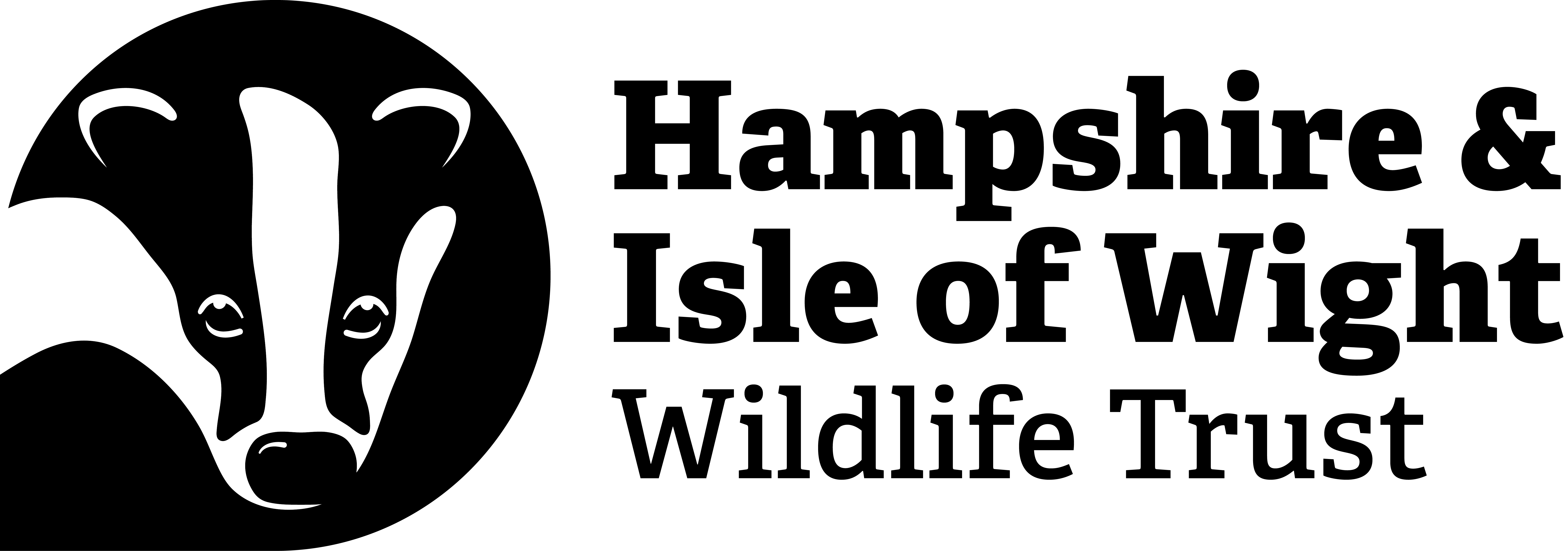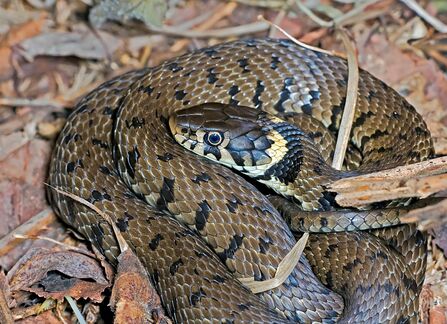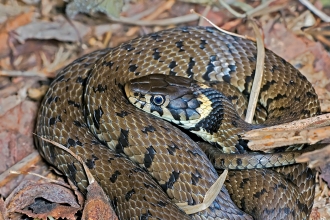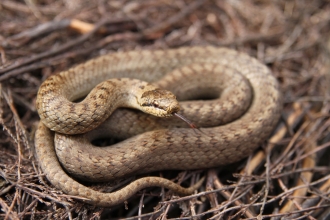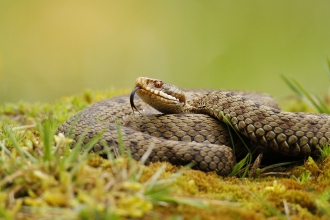Until a few years ago, it was thought that grass snakes were the same as those found across much of Europe. But genetic studies have revealed something surprising: our snakes are genetically different. And they now have their own name, Natrix helvetica, or the barred grass snake, a reference to the dark stripes along their flanks.
Despite their size and mysterious air, grass snakes pose no danger to people. They’re non-venomous hunters, preferring a stealthy ambush to brute force. Their menu is a slippery one: frogs, toads, newts, the occasional fish, and sometimes small mammals. And they’re excellent swimmers. On a summer’s day, you may spot one gliding silently across a pond or ditch, just its head breaking the surface.
As shy creatures, they are keen to avoid encounters with humans. If threatened, however, they put on quite a performance. They may hiss and flatten their heads to appear larger, or – in a truly theatrical twist – roll onto their backs and play dead, tongue lolling for dramatic effect.
